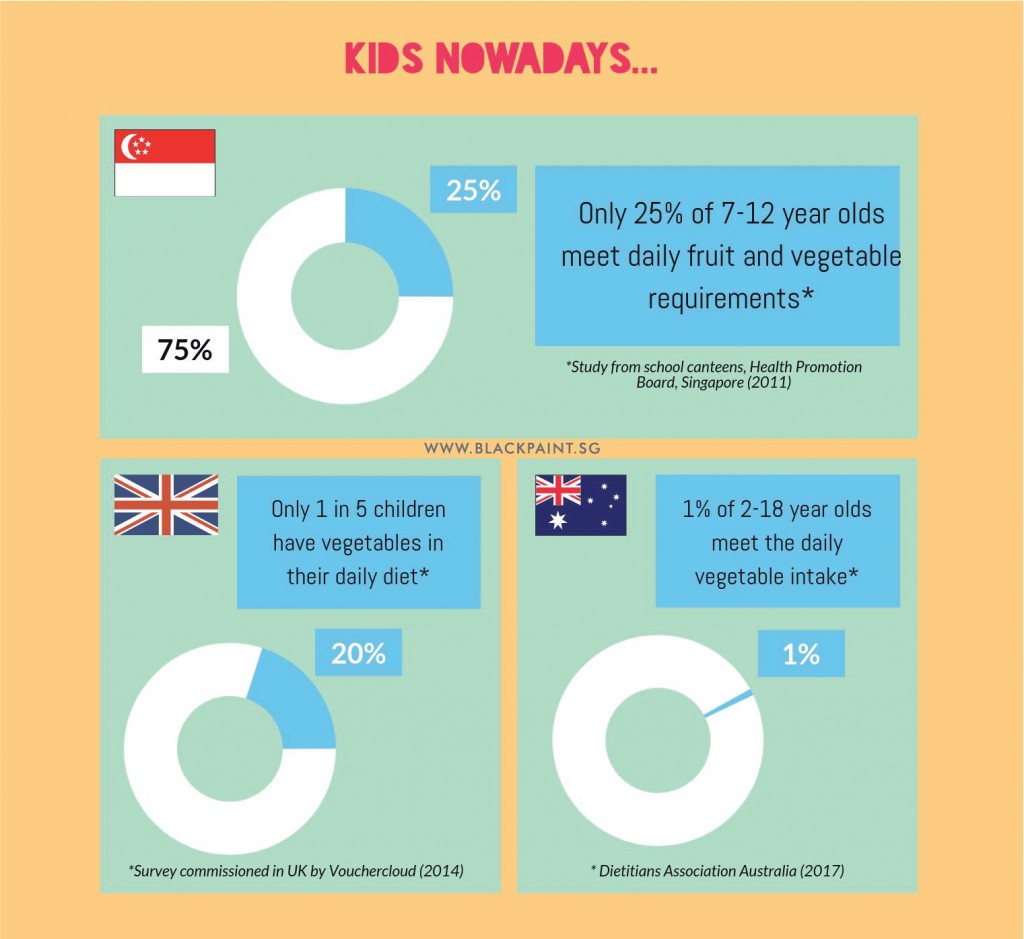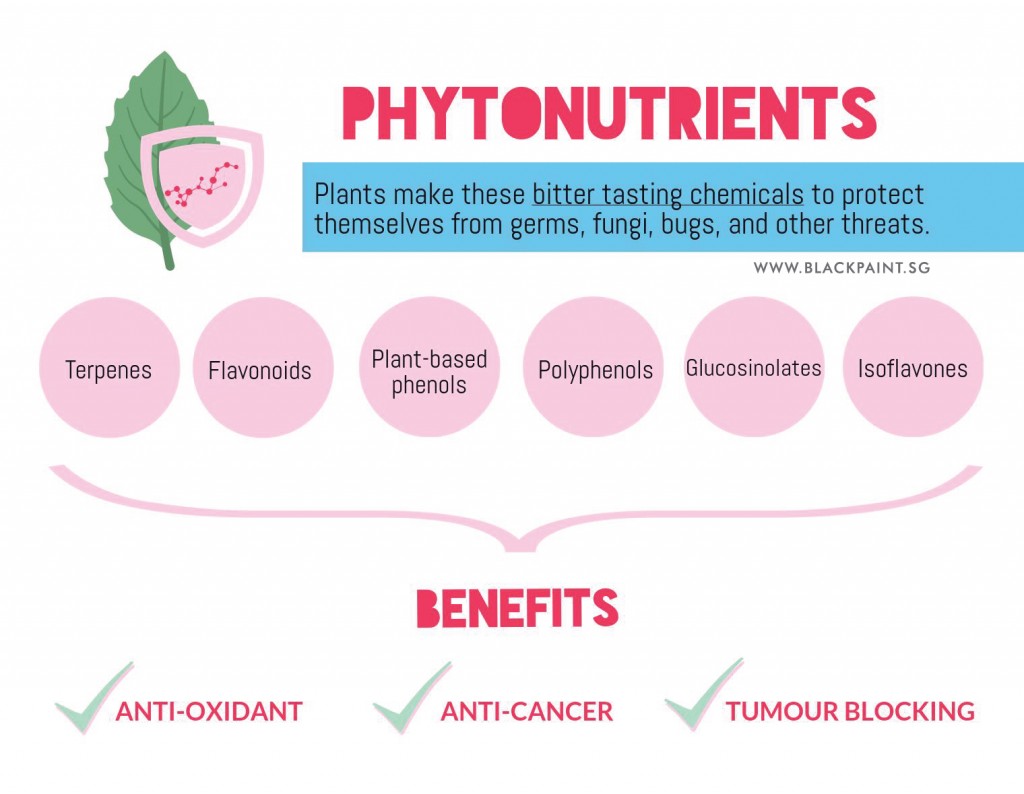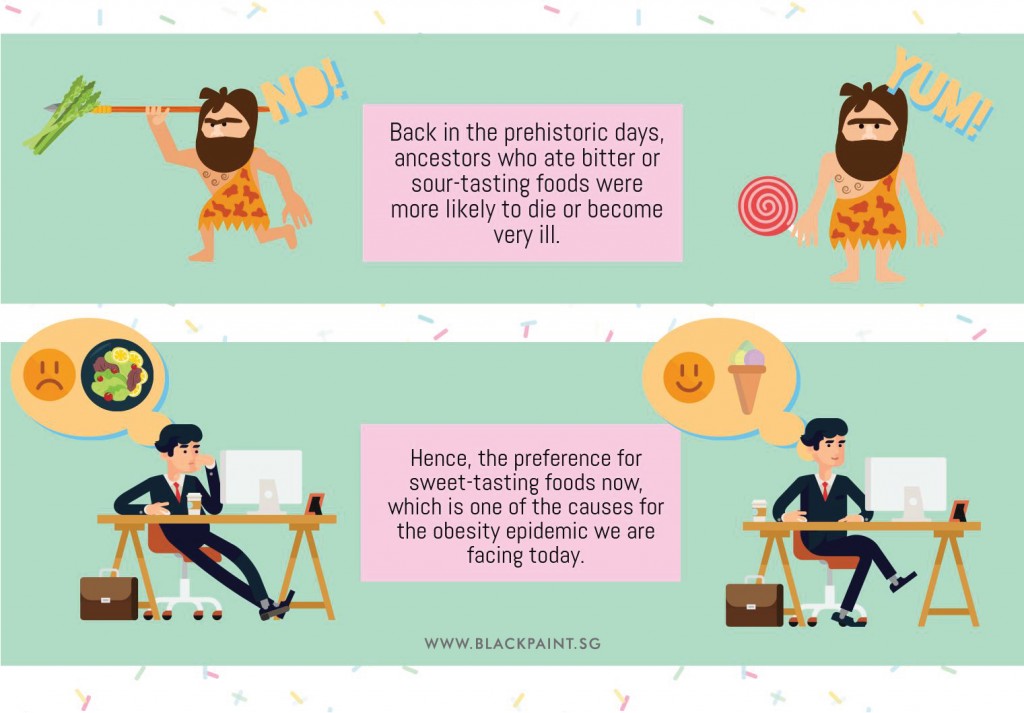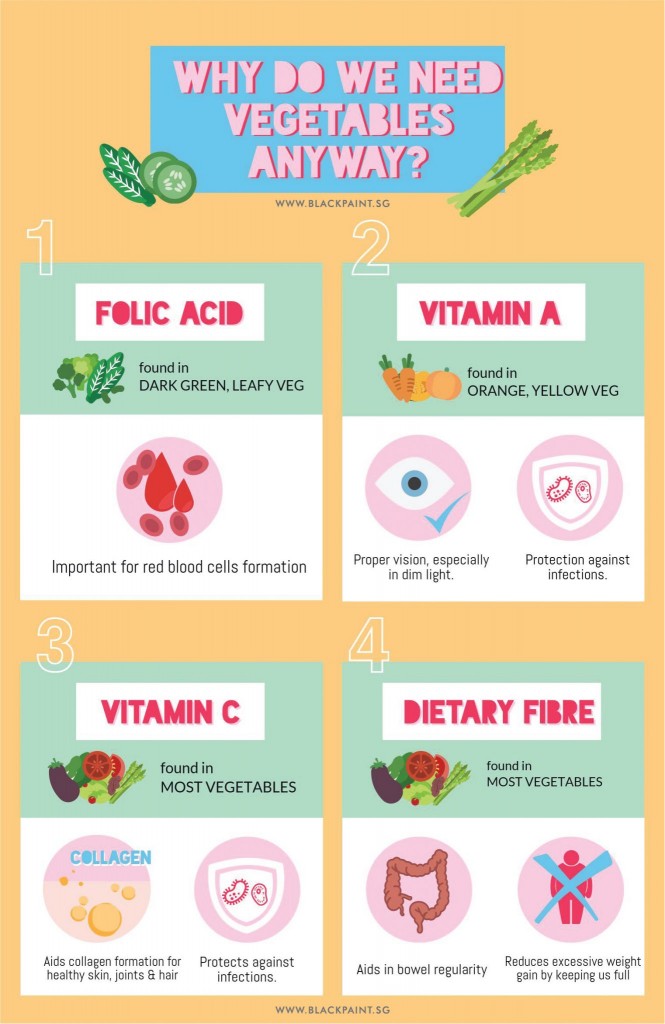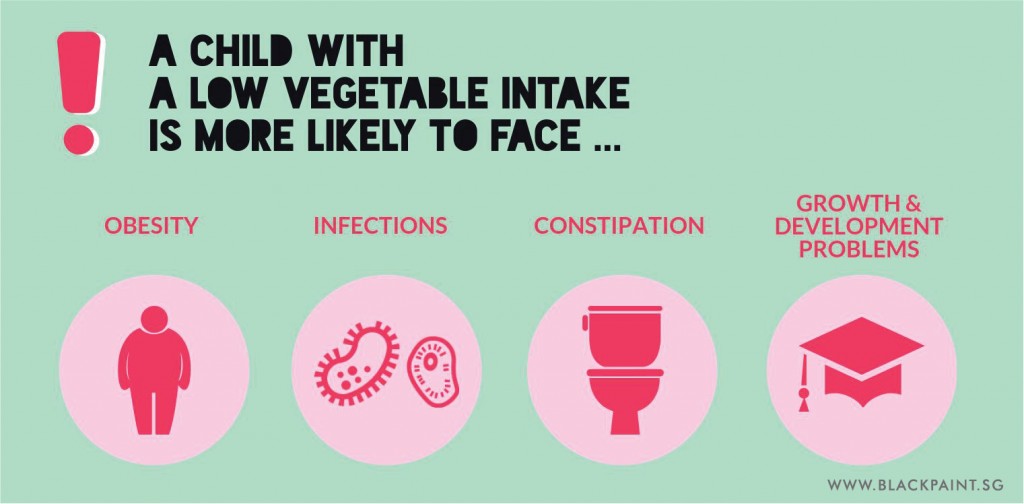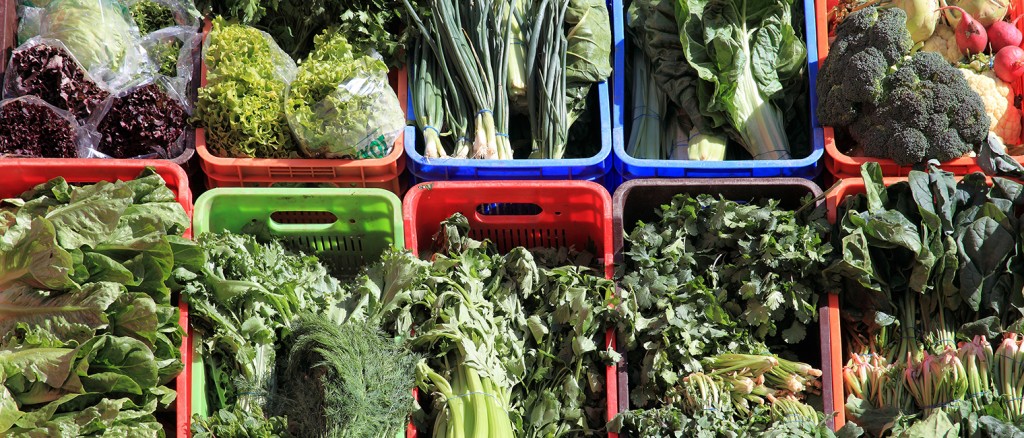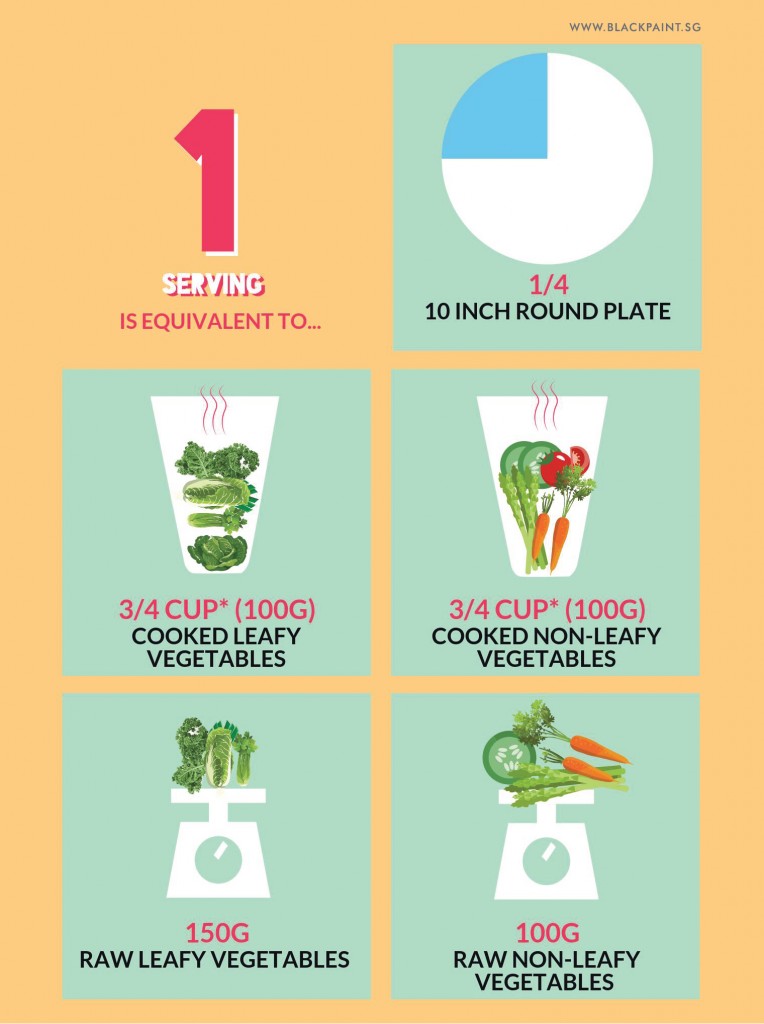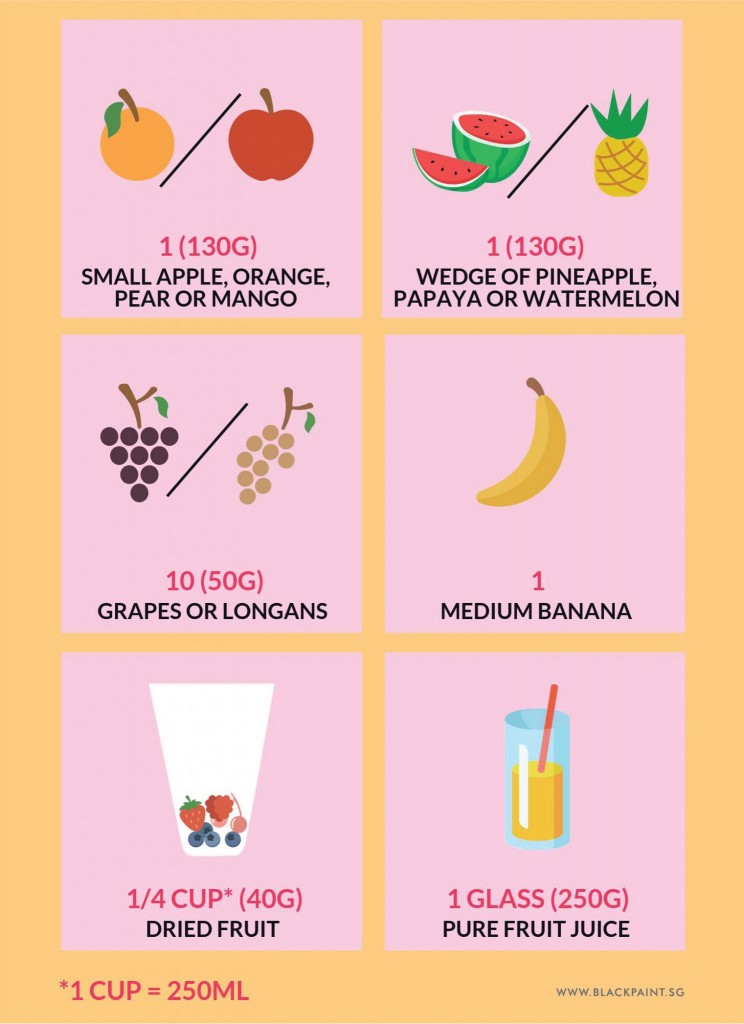Do you have picky eater kids at home who do not eat vegetables?
If you are keen to figure out on how to make kids eat vegetables, the following article is extremely helpful to you.
Continue reading and you shall find the reasons why some kids refuse to eat vegetables so that you can help your picky eater kids by seeking for solution to the reason.
You will also learn about the consequences of kids who do not eat vegetables and a few smart solutions that have proven to work in helping some kids eat their vegetables.
Read the interesting article below now and drop a comment to let us know should you have any extra tips to share with us!
Via Black Paint: My Children Don’t Eat Vegetables: Why? Consequences & Smart Solutions
Most parents struggle to get their children to eat their vegetables.
Well, you are not alone, and this is an issue not just here in Singapore but internationally as well. Here are some statistics to put the picture into perspective:
- Singapore: In an online statement released by Health Promotion Board about the quality of food served in school canteens, they found “…. only 25% of children aged 7 to 12 years, are served the recommended servings of vegetables and fruit daily. Additionally, among those aged 13-16 years, less than half are consuming the recommended servings of vegetables and fruit per day”.
- Australia: Almost 99% of all children and adolescents (2 to 18 years) in Australia are not meeting their daily recommended vegetable intake.
- UK: Only 1 in 5 children eats vegetables daily.
So why is it hard to get kids to eat their vegetables?
Here are some possible explanations:
Food neophobia
Fear of new or unknown foods, also known as food neophobia, is a natural behaviour seen in toddlers, and this behaviour peaks when the child is between 2 to 6 six years old. In addition, this is the period when the child starts to develop independence in his food choices and taste. Hence the combination of these two factors often end up in dinnertime war between parent and child, and sometimes with the other half.
Unpalatable taste
Ask around about the main reason why people (kids and adults alike) don’t eat vegetables, and the answer that you’ll most likely get is that vegetables are bitter. This bitter taste is due to the presence of naturally-occurring calcium and phytonutrients. Phytonutrients is an umbrella term for plant-based phenols and polyphenols, flavonoids, isoflavones, terpenes, and glucosinolates, and serve as the plant’s natural self-defense system.
Plants protect themselves from predators by making these bitter-tasting compounds (i.e. phytonutrients). However, these phytonutrients do good things for us! Apparently, reports have shown that they have antioxidant and anti-cancer properties, as well as tumour-blocking activities. Therefore, diets high in vegetables and fruits are often associated with lower rates of cancer and heart disease.
Sweet- over bitter-tasting foods
Unfortunately, humans have evolved to reject bitter-tasting foods as back in the prehistoric days, ancestors who ate bitter or sour-tasting foods were more likely to die or become very ill. It is also this very reason why food manufacturers are constantly developing ways to reduce or remove these bitter-tasting components from food – the main aim is consumer acceptance.
However, when our ancestors ate sweet-tasting foods, nothing happened to them. One can say that this is very much like a survival mechanism. Hence, humans have become “tuned” to readily accept sweet-tasting foods.
Except when dealing with the stressors of today’s living (e.g. school stress, work stress, you name it), the preference for sweet-tasting foods has worked against us. Many healthcare professionals have singled out sweet-tasting foods (chocolates, lollies, soft drinks) as one of the causes of the obesity epidemic we are facing today.
Exposure
As mentioned earlier, humans have an innate aversion to bitter- and sour-tasting foods, so why is it that as we grow older, we suddenly have a liking for broccoli, brussel sprouts, lemons, and the like? Did our taste buds change, you ask? The answer is no.
It is because we have grown to like these bitter- and sour-tasting foods as time goes by. Think about it – we do not expect ourselves to like something that is fed to us for the first time, especially if it is not pleasant-tasting. Often we become sensitized to that unpleasant taste when there is repeated exposure (to that food). The same can be said about children. The child would need at least 10 to 15 (repeated) exposures to a new food before accepting it.
Health consequences of not eating vegetables
Vegetables contain important nutrients needed for a child’s proper growth and development, such as folic acid, vitamin A, vitamin C, and dietary fibre. Found mostly in dark green leafy vegetables, a child can have other choices too – such as orange-yellow coloured vegetables like carrots and yellow capsicums.
Hence, the following health problems are possible if a child has no or low daily vegetable intake:
- Obesity
- Constipation
- Infections
- Poor growth and development
That said, it is also important to ensure the child eats a wide variety of vegetables as the vitamins and minerals profile of all vegetables are different.
My child does not eat vegetables at all!
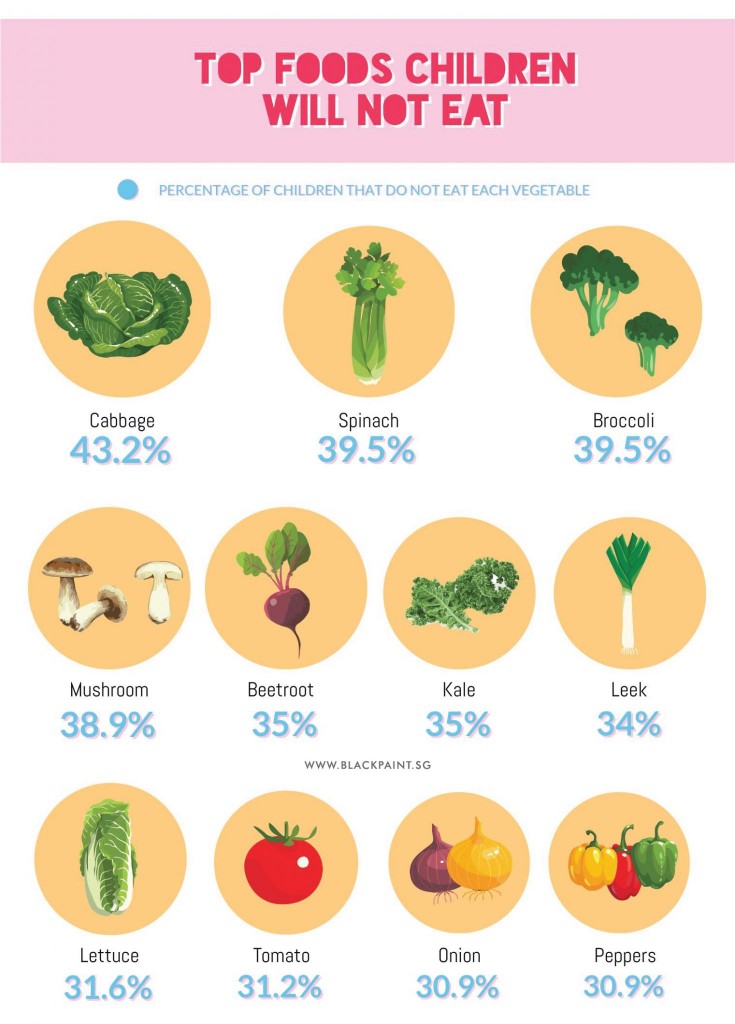
Supplements
“Isn’t it ok for my child to just eat fruits? Or can I just give my child a vegetable supplement?”
Fruits and vegetables of different colour groups provide us with different vitamins, minerals and antioxidants, therefore it is important that the child consumes a wide variety of both fruits and vegetables to get the maximum nutrients they provide. Furthermore, some fruits are higher in calories, and excessive consumption can lead to weight gain. This can be problematic if the child is initially overweight and is replacing his vegetable intake with fruits.
Some parents might also think of buying a kid-formulated vegetable supplement for their child as a replacement for not eating vegetables, but it is not advisable to do so. This is because vegetables provide us with a whole lot of other components which are hard to mimic in a supplement. Hence it is still advisable to encourage the child to consume his vegetables wherever possible.
How do I make my child like vegetables?
Remember that each child has different tastes.
As mentioned earlier in this article, children would usually avoid trying anything new, especially more so if the food is not palatable in the first place. As such, it is not advisable to force-feed your child a vegetable. Put yourself in his/her shoe – you’d reject that food, and chances are you won’t want to touch that food again. The same goes for your child. Furthermore, we need to bear in mind that each child has different taste preferences, and their likes and dislikes change from day to day.
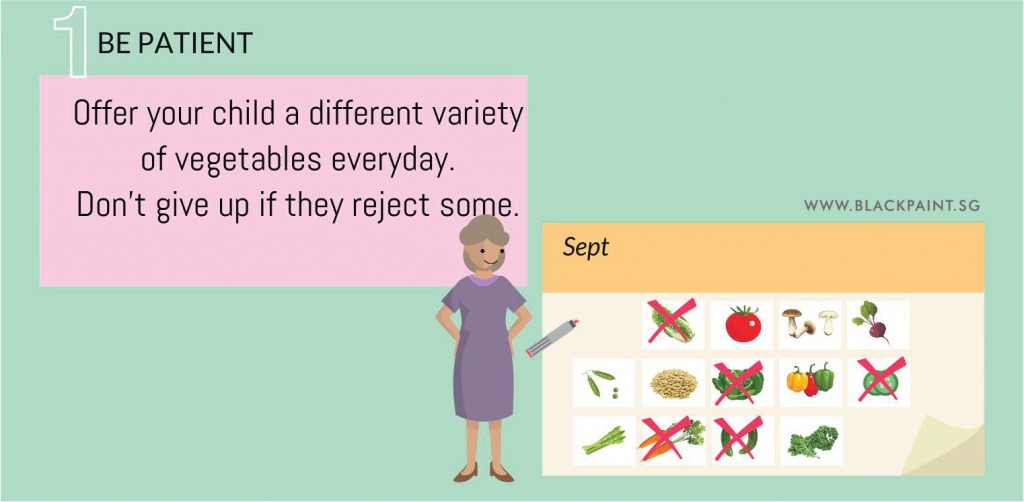
Be patient – go slow and steady.
Hence the best advice for parents would be to start off by offering the child different vegetables every day, not just the ones your child likes. It is alright if the child rejects or only eats a small amount of the new food at the first instance; the key is to not give up. Remember, it generally takes 10 to 15 (or even sometimes up to 20) repeated exposures before a child accepts the new food. It is also helpful to let your child decide what foods he wants to eat from the plate that is being served, as toddler age is the time when the child starts wanting to take control over his/her food choices. Lastly, parents should aim to make mealtime an enjoyable dining experience. Getting frustrated will not solve problems; instead, it leads to more anxiety and frustration, and might lead to fussy eating behaviours in the child.
Role modelling
Children are great imitators, hence if your child sees you eating and enjoying a wide variety of nutritious food, the higher the chances of your child enjoying his food. This highlights the importance of having meals together as a family, especially since dietary habits usally form during the early childhood years. Time and time again, studies have found that families that eat together tend to have a better-quality diet. Children are more likely to meet their daily recommended fruit and vegetable intakes if they sat down at the table to eat with their family.
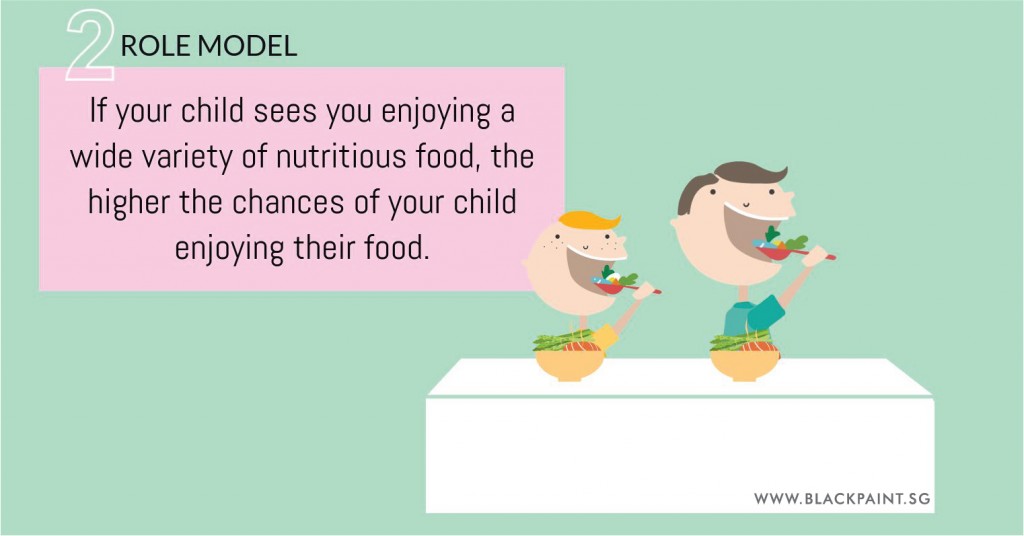
Involve the child
Your child doesn’t like to eat his veggies? Well, getting him involved in the grocery shopping or food preparation might just solve your problem. You can ask him to pick out his favourite fruit and vegetable during grocery shopping, or help with simple food preparation tasks, such as washing the fruits and vegetables. This can spark his/her interest in these foods. Engaging your child in such activities is also a good opportunity for your child to learn more about the foods.
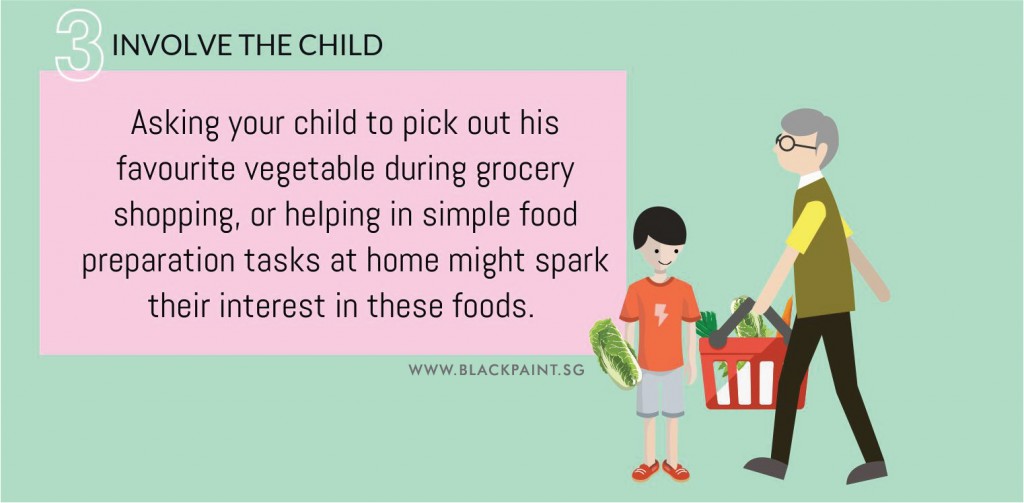
Avoid using food as a reward or bribe
Another mistake that some parents make is telling their child they will give a reward if the child eats a vegetable or fruit. This is not a healthy way, and instead the child will learn ways to manipulate their parents. For example, they will learn that for them to eat their favourite foods, all they need to do is to refuse to eat a particular food. Doing so not only sets the child up for unhealthy eating habits, but also predisposes him to health problems later on in life.
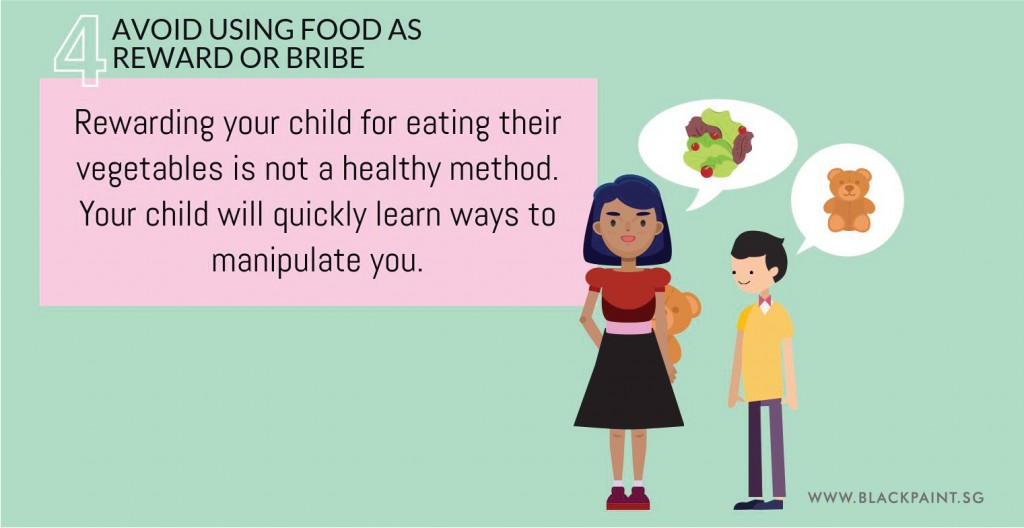
Try serving vegetables and in different cooking styles
It is important for parents to recognize that each child has different tastes and texture preferences. A child who prefers soft-textured foods might prefer vegetables which are more well-cooked, and vice versa. It might also be useful to serve sweeter vegetables such as pumpkin, sweetcorn or cauliflower alongside other (new) vegetables. In addition, serving different colours of vegetables together can be visually appealing. If possible, avoid serving your child blended vegetables. Doing so is not only visually unappealing, it also does not expose your child to the different (food) textures. Try offering your child small portions of the new vegetable and/or experiment with different cooking styles or recipes instead.
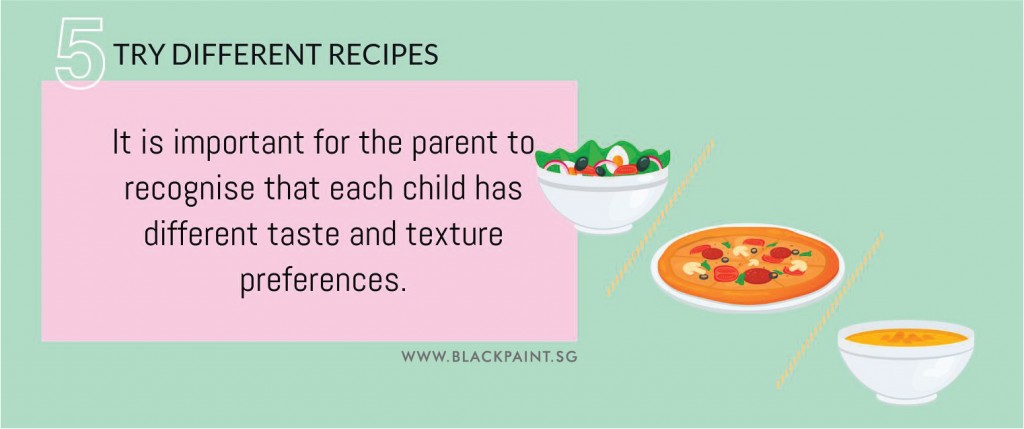
At the end of the day, the most important thing for parents to remember is to be patient and to keep trying!
Serving Recommendations
Food Groups Recommended Serving for Children
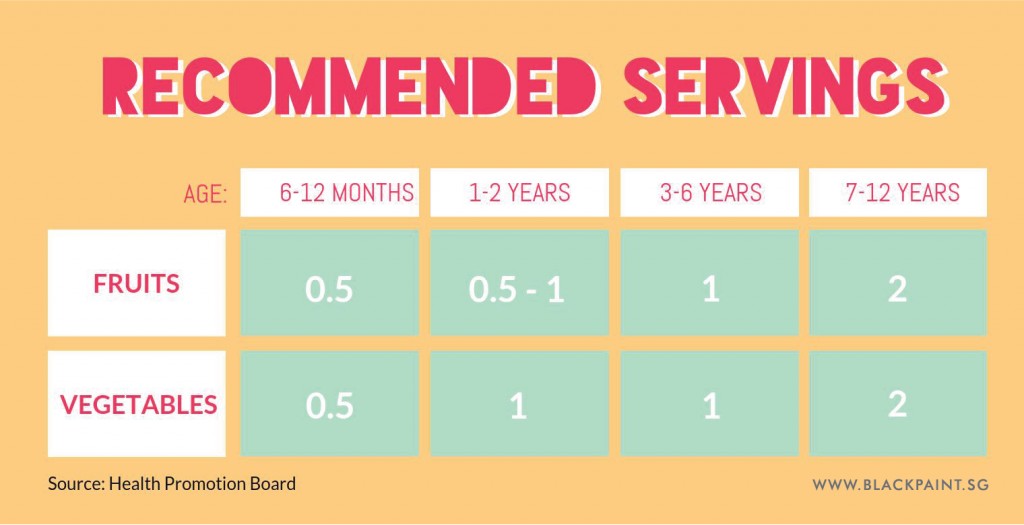
- 6 – 12 months
Fruits: ½ serving; Vegetables: ½ serving - 1 – 2 years
Fruits ½- 1 serving; Vegetables 1 serving - 3 – 6 years
Fruit 1 serving; Vegetables 1 serving - 7 – 12 years
Fruit 2 serving; Vegetables 2 serving
What counts as a serving?
- ¾ mug** cooked leafy vegetables (100g)
- ¾ mug** cooked non-leafy vegetables (100g)
- 150g raw leafy vegetables
- 100g raw non-leafy vegetables
- ¼ round plate+
- 1 small apple, orange, pear or mango (130g)
- 1 wedge pineapple, papaya or watermelon (130g)
- 10 grapes or longans (50g)
- 1 medium banana
- ¼ cup*** dried fruit (40g)
- 1 glass pure fruit juice (250ml)
**mug: 250ml mug; ***cup: 250ml cup; +: 10 inch plate (source Health Promotion Board, Singapore)



